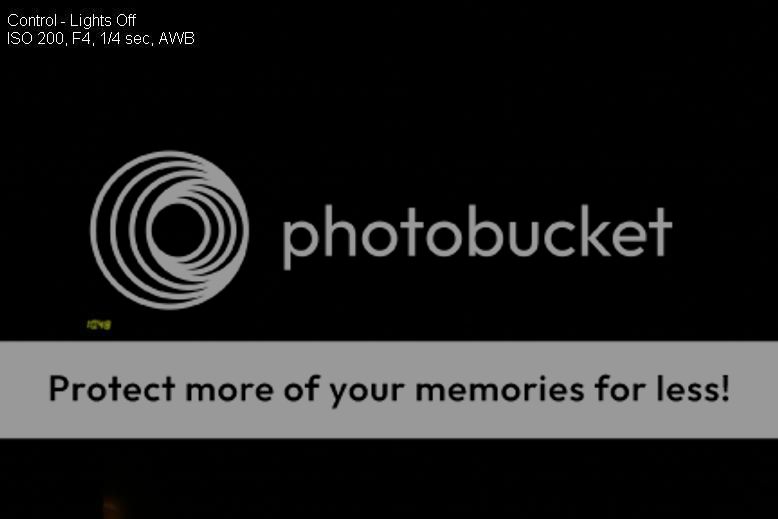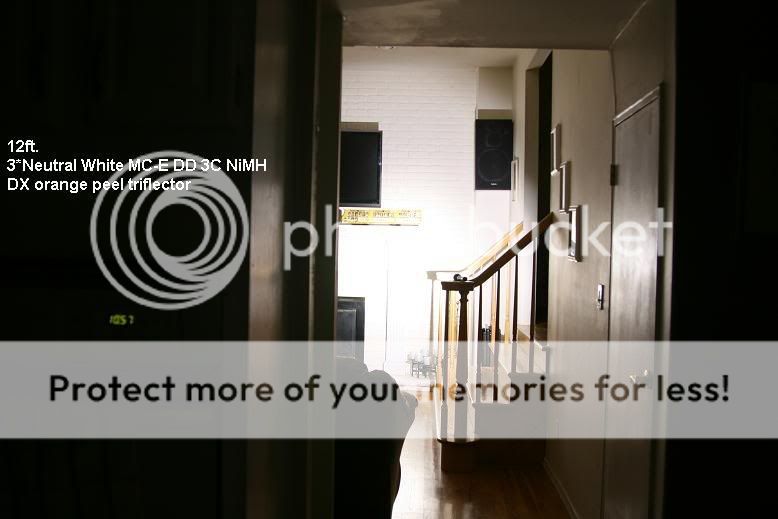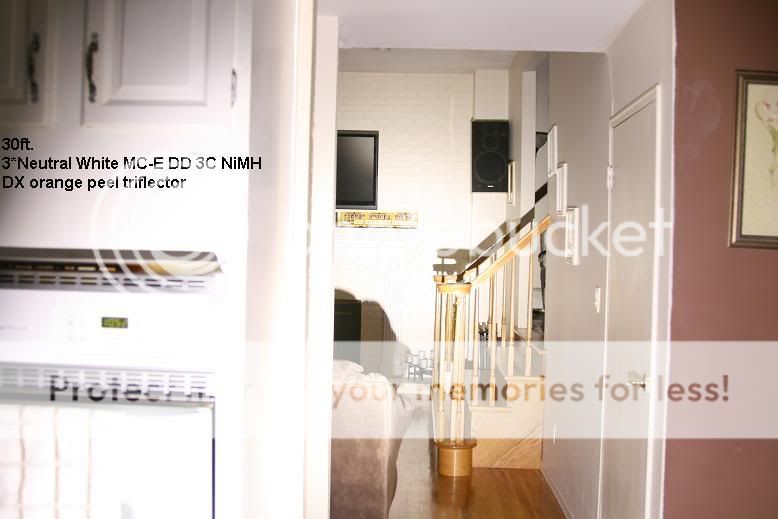Techjunkie
Enlightened
For the most part, my mods are all done with hand tools and with economy a top priority. While when taken apart and examined internally, they don't comapre to the craftsmanship of the big-shots here at CPF, I think they provide some serious bang for the buck. On that theme I offer...
The Mark XII (so named for the 12 LED dies):
Mag 3C host
3x neutral white MC-E emitters
3x DX 8.4v 3A (2.59A really) buck regulators
2x Sony LiNiCoMn 26650 batteries
DX 3*CREE solid AL reflector
I had to bore the battery tube to fit the diameter of the batteries. I also had to bevel the inside edge of the Mag head and knock the threads off of the DX reflector module to make a nice fit. The spring had to be stretched to compensate for the 20mm difference between the two Sony batteries and 3 C cells.
The MC-E emitters are mounted directly to a 3*CREE MCPCB using solder and a small blowtorch (very carefully). I tapped 3 new holes in the bottom of the solid reflector and used another 3*CREE MCPCB to make a spacer by drilling holes larger in diameter than the emitter and leads. The spacer was filed down to remove the pcb coating and reveal the metal core. Silver thermal compound was applied on both sides of the metal spacer before tightening down the screws. In this way, heat is transferred from the emitter PCB to the solid AL reflector and then to the head.
To provide thermal contact with the Mag neck, a stack of washers are fastened to the center screw, with the last washer extending slightly into the threads at the bottom of the head. The wires pass around two narrow washers and then through wider washers that have holes drilled to allow the wires to pass through and avoid being crushed by the tube.
A triple stack of DX MC-E/P7 single mode 3A buck regulators are fit in the neck between the top of the Mag switch and the top of the tube. One edge of each regulator PCB is trimmed to allow wires to pass around it. At the fully tightened position, a small hole is drilled through the threads between the head and tube and a small finishing nail inserted in the hole to keep the head from twisting (and non-flashaholics from destroying everything inside by trying to "focus" the head).
Each regulator powers a single MC-E. Current provided by each regulator to each single MC-E was measured at 2.59A. All three together draw a little over 4A current from the 2500mAH batteries for total full brightness regulated runtime of about 40min.
The full assembly is then dropped in from the top, the grub screw tightened to hold the switch in place and the bezel tightened down.
Pics:
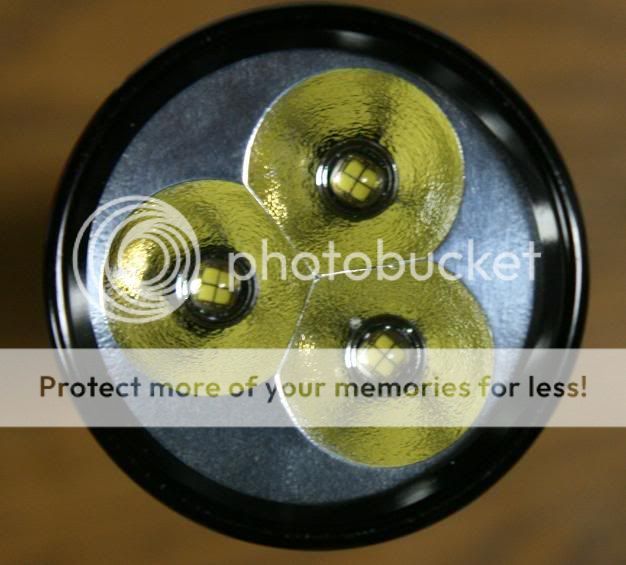
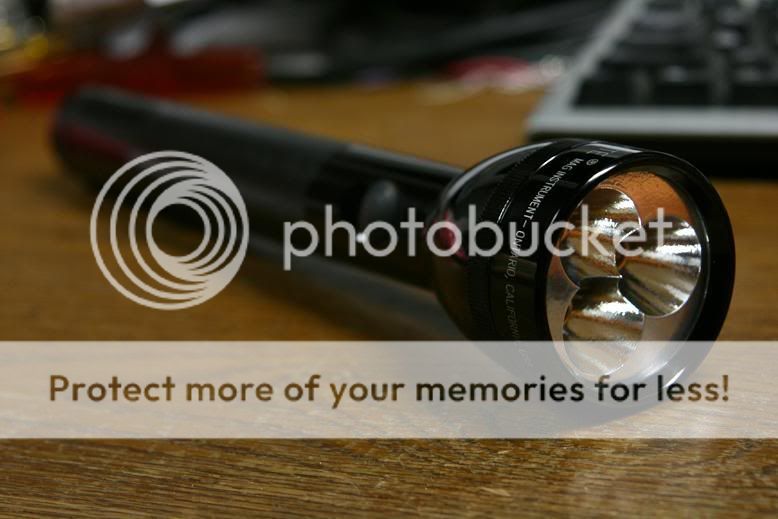
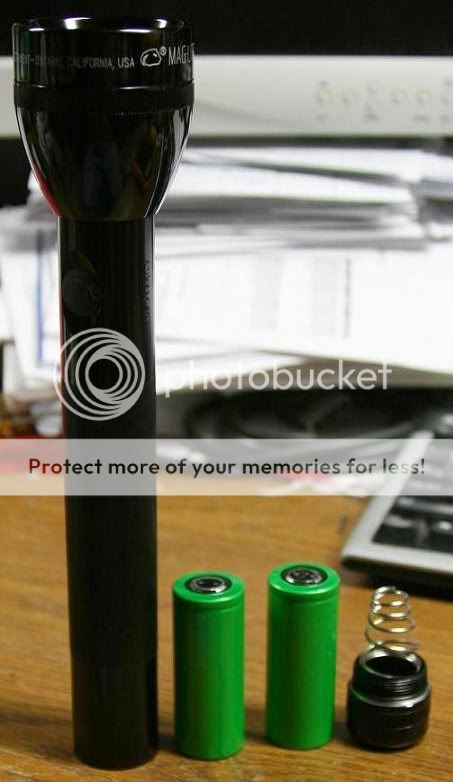
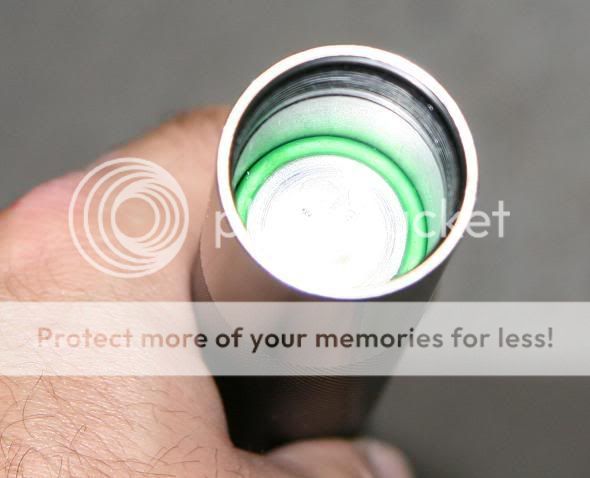
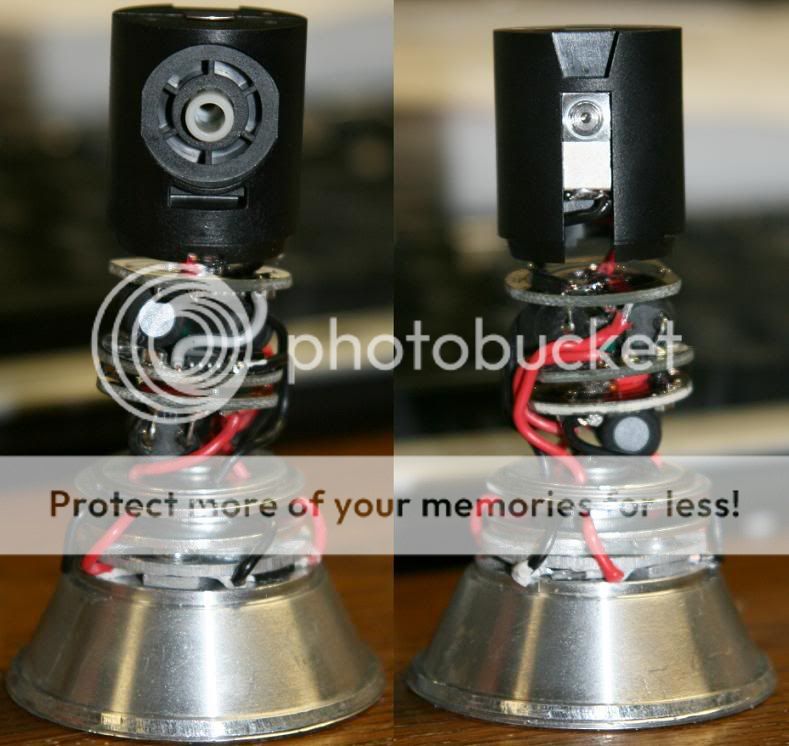
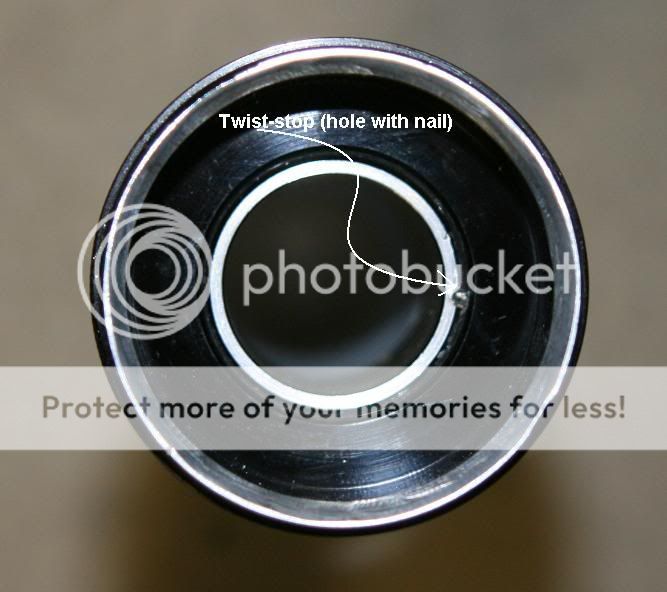
This triple neutral white MC-E torch completes my multi-MC-E collection.
---
In truth it no longer exists as pictured. This last batch of DX drivers that I received create an annoying high pitched whistle. It sounded like three kettles were boiling inside the torch. Not so audible when used outdoors, but inside a still quiet house it sounded as if the flashlight were about to explode. The assembly, drivers removed, was relocated to a beat up old Mag 3C that I had been running a P7 D-bin directly driven off of 3xAccupower Evolution LSD NiMH C-cells. All three MC-E are now wired in parallel and together pull 6.4A from the 3xNiMH C-Cells for around 2.2A each. It's just as bright on a full charge and as the cells deplete and the current drops, I estimate over an hour of diminishing brightness runtime. On the plus side, I've got another fantastic beater that novices can use without fear of damage to batteries, drivers, or host.
The Mark XII (so named for the 12 LED dies):
Mag 3C host
3x neutral white MC-E emitters
3x DX 8.4v 3A (2.59A really) buck regulators
2x Sony LiNiCoMn 26650 batteries
DX 3*CREE solid AL reflector
I had to bore the battery tube to fit the diameter of the batteries. I also had to bevel the inside edge of the Mag head and knock the threads off of the DX reflector module to make a nice fit. The spring had to be stretched to compensate for the 20mm difference between the two Sony batteries and 3 C cells.
The MC-E emitters are mounted directly to a 3*CREE MCPCB using solder and a small blowtorch (very carefully). I tapped 3 new holes in the bottom of the solid reflector and used another 3*CREE MCPCB to make a spacer by drilling holes larger in diameter than the emitter and leads. The spacer was filed down to remove the pcb coating and reveal the metal core. Silver thermal compound was applied on both sides of the metal spacer before tightening down the screws. In this way, heat is transferred from the emitter PCB to the solid AL reflector and then to the head.
To provide thermal contact with the Mag neck, a stack of washers are fastened to the center screw, with the last washer extending slightly into the threads at the bottom of the head. The wires pass around two narrow washers and then through wider washers that have holes drilled to allow the wires to pass through and avoid being crushed by the tube.
A triple stack of DX MC-E/P7 single mode 3A buck regulators are fit in the neck between the top of the Mag switch and the top of the tube. One edge of each regulator PCB is trimmed to allow wires to pass around it. At the fully tightened position, a small hole is drilled through the threads between the head and tube and a small finishing nail inserted in the hole to keep the head from twisting (and non-flashaholics from destroying everything inside by trying to "focus" the head).
Each regulator powers a single MC-E. Current provided by each regulator to each single MC-E was measured at 2.59A. All three together draw a little over 4A current from the 2500mAH batteries for total full brightness regulated runtime of about 40min.
The full assembly is then dropped in from the top, the grub screw tightened to hold the switch in place and the bezel tightened down.
Pics:






This triple neutral white MC-E torch completes my multi-MC-E collection.
---
In truth it no longer exists as pictured. This last batch of DX drivers that I received create an annoying high pitched whistle. It sounded like three kettles were boiling inside the torch. Not so audible when used outdoors, but inside a still quiet house it sounded as if the flashlight were about to explode. The assembly, drivers removed, was relocated to a beat up old Mag 3C that I had been running a P7 D-bin directly driven off of 3xAccupower Evolution LSD NiMH C-cells. All three MC-E are now wired in parallel and together pull 6.4A from the 3xNiMH C-Cells for around 2.2A each. It's just as bright on a full charge and as the cells deplete and the current drops, I estimate over an hour of diminishing brightness runtime. On the plus side, I've got another fantastic beater that novices can use without fear of damage to batteries, drivers, or host.
Last edited:


 . They lit the LEDs but very little output, maybe just a few mA. A little fiddling and the third went
. They lit the LEDs but very little output, maybe just a few mA. A little fiddling and the third went 